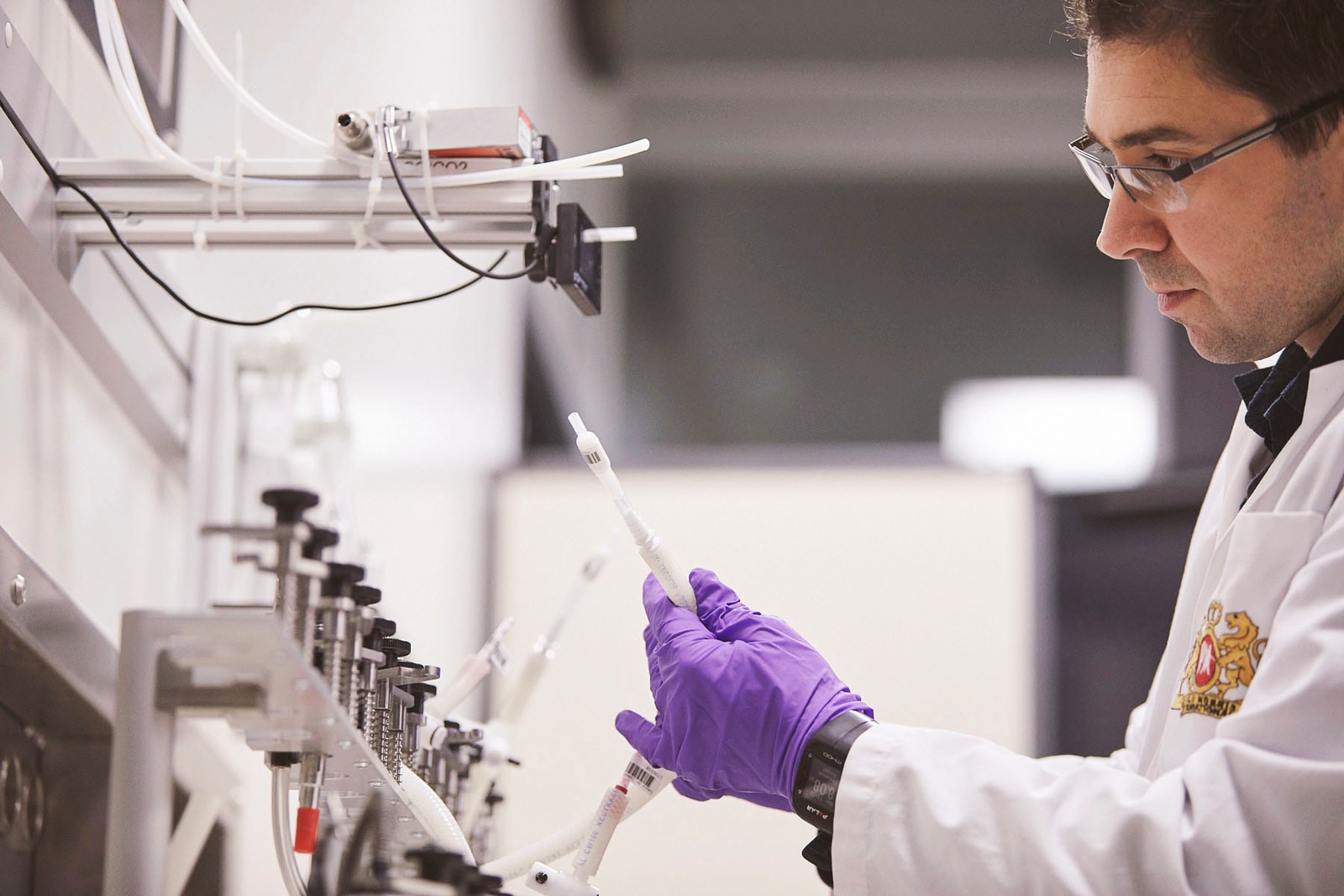Rapports des autorités publiques
Institut fédéral d'évaluation des risques (BfR)
L'étude suivante a été réalisée par des chercheurs de l'Institut fédéral d'évaluation des risques (BfR), une institution scientifique indépendante du Ministère Fédéral de l'alimentation et de l'agriculture (BMEL) en Allemagne. Retrouvez ici le communiqué de presse du BfR concernant l'étude (en allemand).
Mallock, N., Böss, L., Burk, R., et al. Arch Toxicol (2018). Levels of selected analytes in the emissions of "heat not burn" tobacco products that are relevant to assess human health risks. Archives of Toxicology 92 (6): 2145-2149.
U.S. Food and Drug Administration (FDA)
FDA. (2020, July 7). FDA authorizes marketing of our Tobacco Heating System with 'Reduced Exposure' information.
FDA. (2019, April 30). FDA permits sale of our Tobacco Heating System through premarket tobacco product application pathway.
Office fédéral de la santé publique (OFSP)
L'OFSP a declaré dans un rapport destiné à la Commission de la Sécurité Social et de la Santé Publique (CSSS) publié en avril 2019 "...[qu']on peut néanmoins affirmer que, pour les fumeurs et par rapport à la fumée de cigarettes, les risques liés aux e-cigarettes et aux produits du tabac à chauffer sont, selon toute vraisemblance, plus faibles que ceux liés aux cigarettes classiques."
Addiction Suisse
De nombreuses interrogations existent sur l'utilisation des nouveaux produits dont notre produit phare du tabac chauffé par les mineurs. Addiction Suisse s'est penchée sur la question et a conclu que: "2.7 % des garçons et des filles de 15 ans en ont fait usage au moins une fois dans les 30 derniers jours".
Delgrande Jordan, M., Balsiger, N., Schmidhauser, V. (2023). La consommation de substances psychoactives des 11 à 15 ans en Suisse – Situation en 2022 et évolutions depuis dans le temps. Résultats de l’étude Health Behaviour in School-aged Children (HBSC).
Publications scientifiques
Amorós-Pérez, A., Cano-Casanova, L., del Carmen Román-Martínez, M., Ángeles Lillo-Ródenas, M. (2021). Comparison of particulate matter emission and soluble matter collected from combustion cigarettes and heated tobacco products using a setup designed to simulate puffing regimes, Chem Engineer J Advances.
Kärkelä, T., Tapper, U., Kajolinna, T. (2021). Comparison of 3R4F cigarette smoke and our heated tobacco product aerosol emissions, Environ Sci Pollut Res Int.
Cozzani, V., Barontini, F., McGrath, T., Mahler, B., Nordlund, M., Smith, M., Schaller, J.P., Zuber, G. (2020). An experimental investigation into the operation of an electrically heated tobacco system, Thermochim Acta.
Queloz, S., & Etter, J.-F. (2019). An online survey of users of tobacco vaporizers, reasons and modes of utilization, perceived advantages and perceived risks.
BMC Public Health, 19(1).
Biondi-Zoccai, G., Sciarretta, S., Bullen, C., Nocella, C., Violi, F., Loffredo, L., … Frati, G. (2019). Acute Effects of Heat-Not-Burn, Electronic Vaping, and Traditional Tobacco Combustion Cigarettes: The Sapienza University of Rome-Vascular Assessment of Proatherosclerotic Effects of Smoking (SUR - VAPES ) 2 Randomized Trial.
Journal of the American Heart Association, 8(6), e010455.
Berthet, A., Jacot Sadowski, I, Zürcher, K., Guenin, V., Gendre, A., Auer, R., Vernez, D., Cornuz, J., (2018). Produits du tabac «chauffé» : que faut‑il savoir ? Rev Med Suisse 2018; volume 14. 1935-1941.
Pieper, E., Mallock, N., Henkler-Stephani, F., Luch, A., (2018). Tabakerhitzer als neues Produkt der Tabakindustrie: Gesundheitliche Risiken. Bundesgesundheitsblatt - Gesundheitsforschung - Gesundheitsschutz.
Farsalinos, K.E., Yannovits, N., Sarri, T., Voudris, V., Poulas, K., and Leischow, S. (2018). Carbonyl emissions from a novel heated tobacco products: comparison with an e-cigarette and a tobacco cigarette. Addiction.
Li, X., Luo, Y., Jiang, X., Zhang, H., Zhu, F., Hu, S., Hou, H., Hu. Q., and Pang Y. (2018). Chemical analysis and simulated pyrolysis of Tobacco Heating System 2.2 compared to conventional cigarettes.
Nicotine Tob Res, in press.
Thorne, D., Breheny, D., Proctor, C., and Gaca, M. (2017). Assessment of novel tobacco heating product THP1.0. Part 7: Comparative in vitro toxicological evaluation.
Regul Toxicol Pharm.
Stephens, W.E. (2017). Comparing the cancer potencies of emissions from vapourised nicotine products including e-cigarettes with those of tobacco smoke.
Tob Control, in press.
Auer, R., N. Concha-Lozano, I. Jacot-Sadowski, J. Cornuz and A. Berthet (2017). Heat-not-burn tobacco cigarettes: smoke by any other name. JAMA Intern Med 177(7): 1050-1052.
Note : à ce jour, il s’agit de la seule étude helvétique qui ne confirme pas nos données. Les méthodologies employées dans cette étude ont cependant été remises en question par nos chercheurs (
ici) et par des chercheurs indépendants (ici :Perplexing conclusions concerning heat-not-burn tobacco cigarettes.), ainsi que par la Food and Drug Administrationaméricaine qui a conclu que : “The data published is not considered adequate for comparing the levels of HPHCs between the our heated tobacco product and combusted cigarettes. There are significant analytical issues in the Auer et al. study, such as lack of testing reference samples, low number of replicates, lack of selectivity on some analytical methods. In comparison, we have not identified specific issues with the applicant’s methods.” (FDA Briefing Document: January 24-25, 2018 TPSAC Meeting) (Les données publiées [dans cette étude] ne sont pas considérée comme étant adéquates pour comparer les niveaux de composants nocifs et potentiellement nocifs entre les produits pour notre système de tabac chauffé et les cigarettes combustibles. L’étude contient des problèmes analytiques significatifs, tels que l’absence de test sur des échantillons de référence, un faible nombre d’essais, une insuffisance de sélectivité sur certaines méthodes analytiques. En comparaison, nous n’avons pas identifié de problèmes spécifiques avec les méthodes [de Philip Morris].)
Farsalinos, K. E., N. Yannovits, T. Sarri, V. Voudris and K. Poulas (2017). Nicotine delivery to the aerosol of a heat-not-burn tobacco product: comparison with a tobacco cigarette and e-cigarettes.
Nicotine Tob Res.
Tabuchi, T., Kiyhohara, K., Hoshine, T., Bekki, K., Inaba, Y., and Kunugita, N. (2016). Awareness and use of electronic cigarettes and heat-not-burn tobacco products in Japan.
Addiction 111(4): 706-713.
Présentations dans des conférences internationales
Setyan A., Bührer T., Leuzinger F., Netkueakul W., Michael P., Jing W., ETH Zürich / Empa, Switzerland, Physico-Chemical Characterization of Particles and Volatile Organic Compounds Emitted by Electronic Cigarettes and Heat-Not-Burn Products, Compared to a Reference Tobacco Cigarette, 10th International Aerosol Conference.
Dr Konstantinos Farsalinos, Toxicant exposure: a comparison between e-cigarettes and heat not burn technology, Global Forum on Nicotine 2017.




